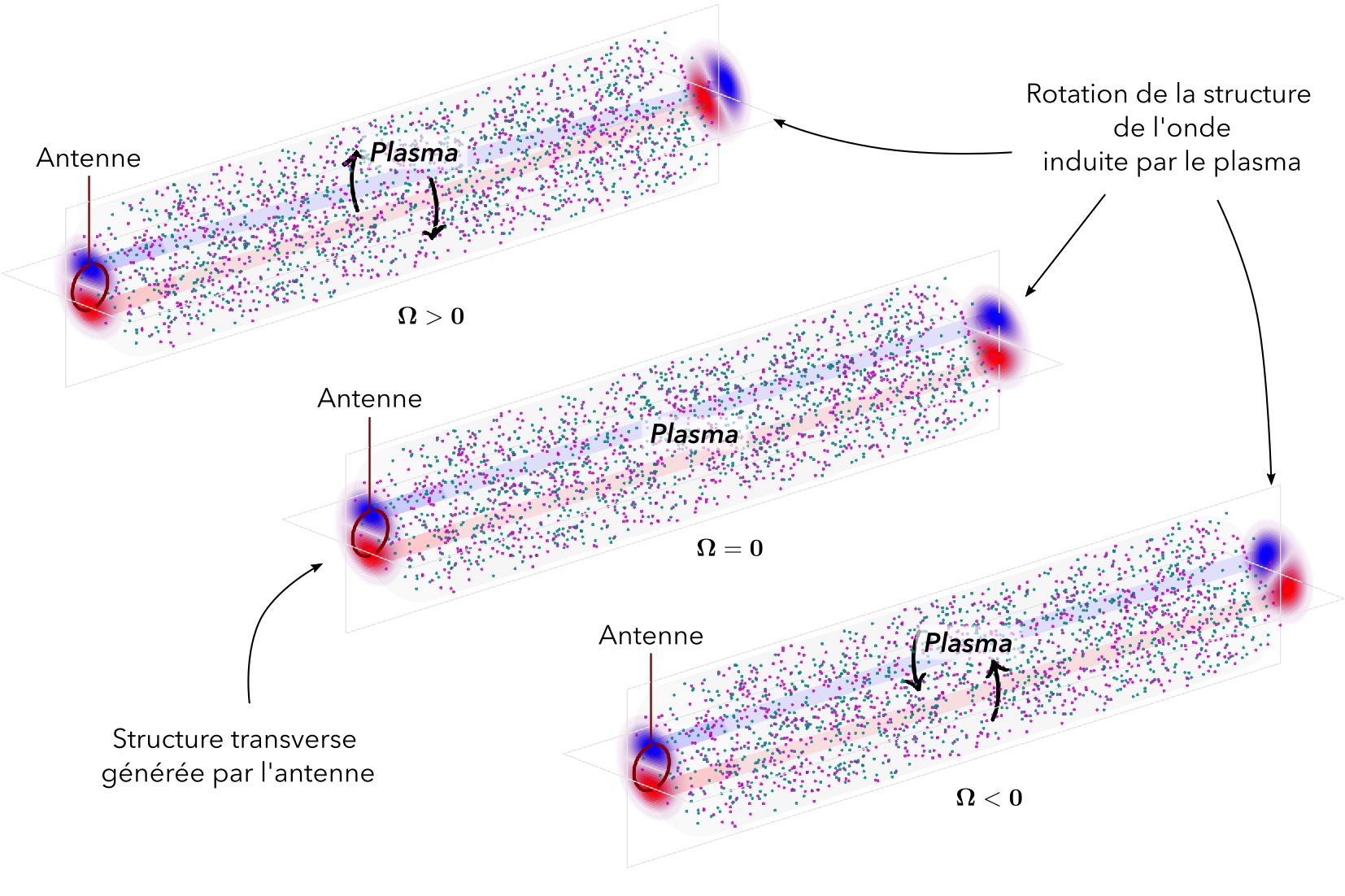Follow us on Google News (click on ☆)
The propagation of a light wave is altered by the motion of the medium through which it propagates. The phenomenon has been known since the 19th century, but it is difficult to observe due to the scale difference between the speed of light and that of the moving medium. This is why, until now, it had only been demonstrated under very specific conditions where the speed of light is artificially slowed down.

Illustration of the image rotation phenomenon observed experimentally for an Alfvén wave. The transverse structure of the wave (blue and red lobes) produced by the antenna can be rotated in both directions by controlling the rotation of the plasma column (point cloud).
© Renaud Gueroult et al.
Researchers from the Plasma and Energy Conversion Laboratory (Laplace, CNRS/Toulouse INP/University of Toulouse), in collaboration with the University of California, Los Angeles (UCLA), the Laboratory of Physics of the 2 Infinities - Irène Joliot-Curie (IJCLab, CNRS/University of Paris-Saclay) and Princeton University, have for the first time experimentally observed the dragging of a wave by a naturally rotating medium, producing image rotation in a plasma.
The phenomenon is related to the formation, in plasmas, of magnetic field variations that take the form of slow waves. These waves, whose existence was predicted by astrophysicist Hannes Alfvén in the mid-20th century, have since been observed in the laboratory and in space.
A plasma therefore constitutes a favorable medium for observing the wave dragging phenomenon, provided it can be set in motion. This is what the researchers succeeded in doing, using the Large Plasma Device (LAPD) at the University of California, Los Angeles to set a plasma in rotation and observe the corresponding rotation of Alfvén waves. The LAPD produces a plasma column 20 meters long and 75 centimeters in diameter. The setup for this study focused on a five-meter section of the equipment. At the ends, on one side, an antenna creates magnetic perturbations generating Alfvén waves, and on the other, a set of electrodes sets the plasma in motion in a controlled manner. The plasma and wave parameters are measured at several points along the column section.
The observed phenomenon is a rotation of the transverse structure of the wave (its amplitude profile in the plane perpendicular to the direction of propagation), under the effect of the rotation of the plasma it passes through. The equivalent, if waves in the visible spectrum were used, of an image rotating (see illustration).
These studies could pave the way for new instruments to remotely probe matter, whether in astrophysics or for the study of nuclear fusion. They also allow, on a fundamental level, a better understanding of the angular momentum coupling between a wave and a rotating medium. New experiments are planned at the LAPD to study other effects of plasma motion on the propagation of Alfvén waves.